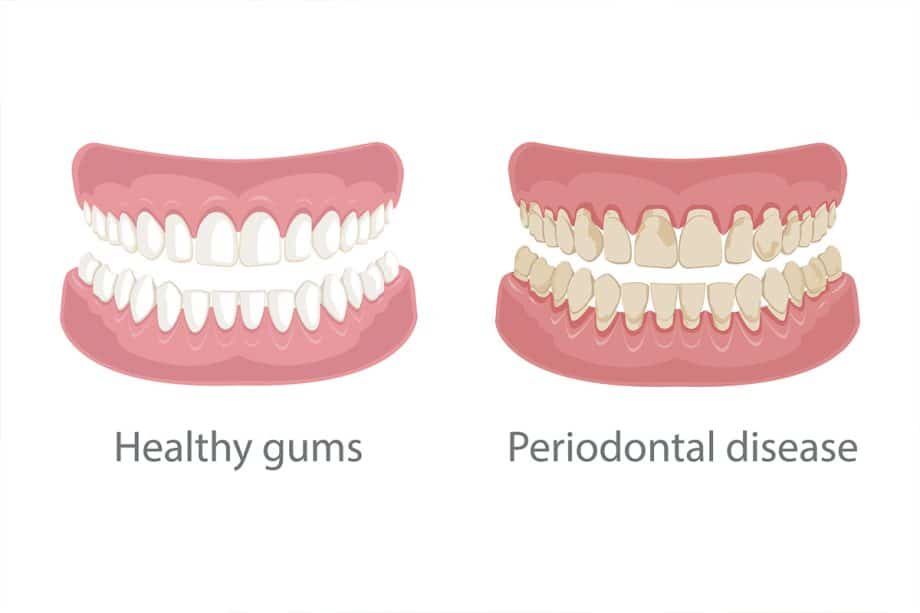Gum disease not only impacts your overall oral health but it also can cause other serious health issues. Knowing the common signs of periodontal disease can help you catch a problem as it’s starting and improve your dental health. Thankfully, simply brushing and flossing correctly can significantly reduce the complications of repeated gum infections.
Four Common Signs of Gum Disease
Bleeding Gums
An early sign of gum disease is that the gums bleed easily, which is usually noticeable when you floss or brush. The bleeding typically subsides quickly, however, can create more spaces for bacteria to enter your gums and cause more problems.
Swelling or Tenderness
One way the human body responds to an infection is to create inflammation in the area and the surrounding tissues. This is a common early sign of gum infection and pending periodontitis.
Bad Breath
Bacteria that is left to collect in the pockets of the gums can cause halitosis or consistently bad breath when you have a gum infection. In addition, you may also notice a foul taste in your mouth. The same bacteria attributed to bad breath can also cause a taste in your mouth. As the bacteria grow, the taste worsens.
Pain With Chewing
The same inflammation and bleeding that is common with gum disease often causes pain when you chew food. Unfortunately, the longer the bacteria remains, the worse the pain becomes as the gums recede and cause even more damage to your mouth.
Frequently Asked Questions About Gum Disease
Is Gum Disease Genetic?
There is a potential that some genetic factors can make individuals more prone to developing gum disease than others, but your genes don’t necessarily cause you to develop an infection.
However, what is more commonly passed on that does cause gum disease is poor at-home habits, nutrition, and access to dental care. In other words, if your parents or grandparents had gum disease because of their limited resources, it could potentially put you at a higher risk of developing gum disease too.
Do I Need a Special Toothbrush for Gum Disease?
Since gum disease is down below the gum tissues and around the roots of your teeth, the type of toothbrush you use isn’t extremely important. But keep in mind that a high-quality electric toothbrush is more effective at removing plaque from all areas of the teeth, including the areas down by the gums. This type of brush will also stimulate your gum tissues to improve circulation and healing.
Cleaning along your gum lines with an electric toothbrush may also help you limit the progression of gum disease and decrease the risk of it spreading. Remember that no matter how well you brush, flossing and using a water flosser to clean below the gum lines and between teeth is essential for same day crowns.
Call Smile Shack Today
Whether you think you have gum disease or need help preventing it, the professional team at Smile Shack is here to help. We help patients from all backgrounds maintain their dental health and receive the treatments that they need.
If you are experiencing any of these symptoms of gum disease, don’t wait to seek treatment. Call Smile Shack today at 631-928-7500 to schedule an appointment.


